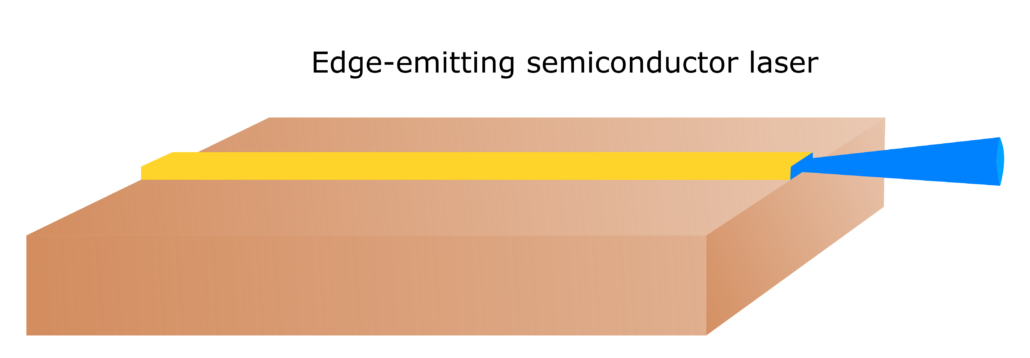Edge-emitting (or in-plane) lasers are devices that are made of semiconducting materials to form resonators with non-linear increase in monochromatic emission. The propagation direction of the emitted light is along the surface of the wafer where the light is reflected from cleaved edges at the two sides of the resonator in order to operate as a Fabry-Perot cavity. The length of the lasers is in the millimeter range and depends on the ability of the resonator to overcome the optical losses in the system, and therefore, have an increased gain in emission. These lasers can be used in a various number of spectroscopic applications depending on the emission wavelength.
The video shows a Gallium Nitride (GaN) based edge emitting laser with cleaved facets (left) and the analyzed emission spectrum with a spectrometer (right) as the injected current increases in the device, and therefore the emitted intensity is also increased. Here, the designed emission wavelength is centered at around 460 nm, thus having a visible blue color. The device was fabricated and characterized at the facilities of Tyndall National Institute in the III-V Materials and Devices group of Brian Corbett. The work is supported by the Irish Photonic Integration Center (IPIC) and the Science Foundation Ireland (SFI).
Sparkle has received funding from the European Union’s Horizon 2020 research and innovation programme under the Marie Sklodowska-Curie grant agreement No. 847652 and from Science Foundation Ireland.






